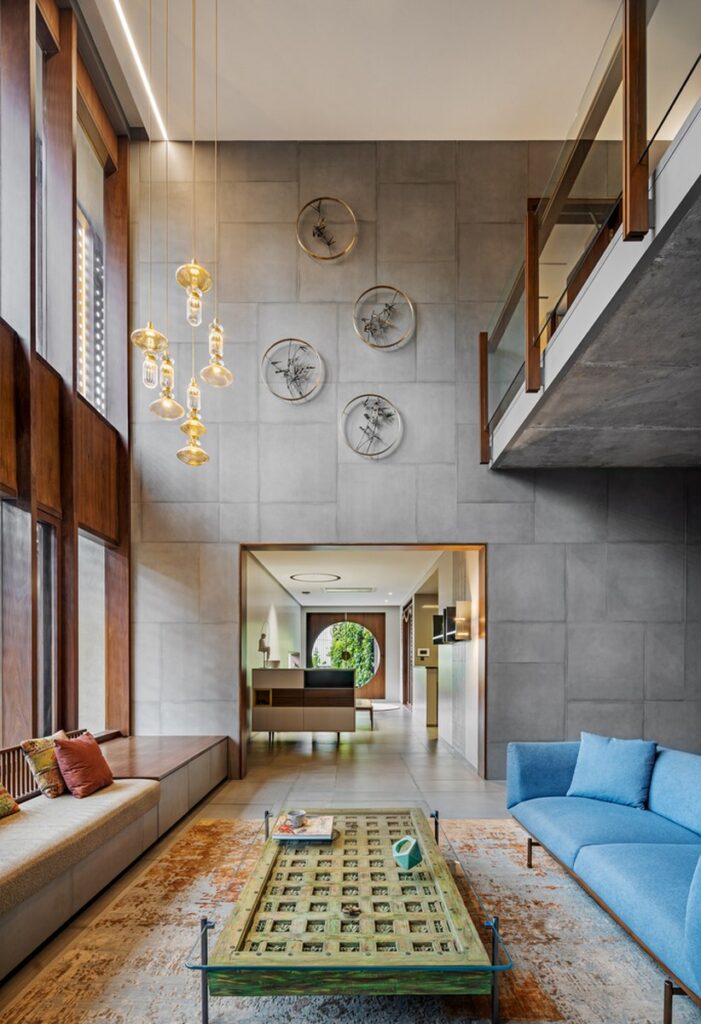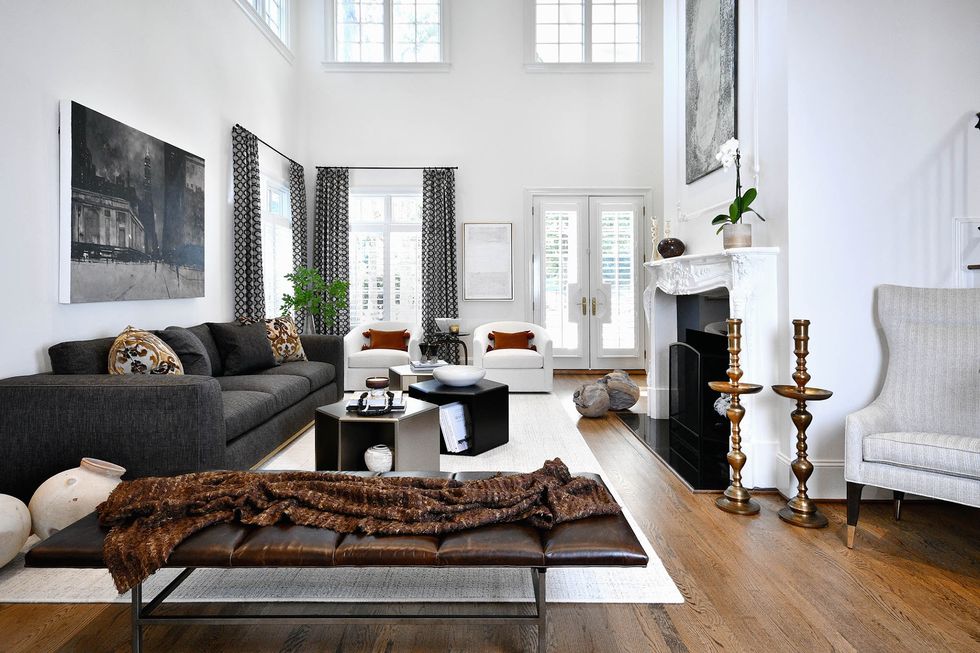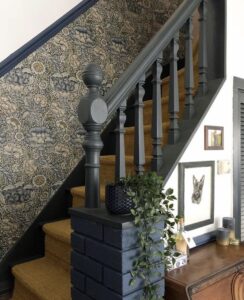High ceilings can be a striking feature in a home or commercial space, but they require thoughtful design and consideration of various factors to ensure they are both aesthetically pleasing and functional. When properly managed, high ceilings can enhance the overall ambiance and character of a room.
High ceilings, with their soaring heights and expansive vertical spaces, have the remarkable ability to transform the ambiance of any interior. They are, in essence, a canvas for architects and designers to craft spaces that inspire awe, creativity, and a sense of grandeur. The art of utilizing high ceilings goes beyond mere aesthetics; it’s about harnessing the potential vertical space to create environments that breathe and elevate the human spirit.
A high ceiling typically refers to a room or space with a higher-than-average ceiling height. High ceilings can have several advantages and aesthetic benefits, but they also come with their own set of considerations. Here are some key points to know about high ceilings.
What We'll Cover
ToggleDesigners Take on High Ceilings:
Walk through the perspectives of visionary designers and architects from around the world, each offering unique insights into how high ceilings can accentuate interiors and shape the very essence of architectural design. From Frank Lloyd Wright’s belief in the boundless dreams they inspire to Zaha Hadid’s take on spatial movement, we journey through the thoughts of these luminaries who have harnessed the power of height to craft iconic spaces. Through their words, we discover that high ceilings are not merely architectural features; they are storytellers, sculptors of atmosphere, and conduits to a world where space and imagination converge.
Here, we present the voices of iconic designers and architects from across the ages, whose words echo through the lofty expanses they crafted. These quotes reflect the perspectives of renowned designers and architects on the significance of high ceilings in architectural design and how they contribute to the overall experience of a space.
- Frank Lloyd Wright: “A great architect is not made by way of a brain nearly so much as he is made by way of a cultivated, enriched heart. The thickness of your ceiling shouldn’t limit the height of your dreams.”
- Zaha Hadid: “Architecture is how the person places herself in the space. Fashion is about how you place the object on the person. And architecture is about how you move the person through the space, and that’s how high ceilings play their part.”
- Le Corbusier: “Space and light and order. Those are the things that men need just as much as they need bread or a place to sleep. High ceilings allow space to breathe and light to dance.”
- M. Pei: “The higher the ceilings, the closer to the divine. Architecture should inspire awe, and high ceilings are the gateway to that feeling.”
- Santiago Calatrava: “In architecture, you should live to see two things: the ground and the sky. The ground to stay connected, and the sky to dream. High ceilings bring the sky indoors.”
- Renzo Piano: “Architecture is a very dangerous job. If a writer makes a bad book, eh, people don’t read it. But if you make bad architecture, you impose it on people for a hundred years. High ceilings provide room for brilliance.”
- Louis Kahn: “A room is not a room without natural light. The height of the ceiling defines the quality of that light.”
- Philip Johnson: “Architecture is the art of how to waste space. High ceilings make that waste a masterpiece.”
- Mies van der Rohe: Less is more. But sometimes, more is more. High ceilings give you that ‘more.’
- Oscar Niemeyer: “In architecture, there is no end, no beginning. There is only the infinite passion of life. High ceilings mirror that passion.”
Exploring the Varied Dimensions of High Ceilings
Typical Ceiling Heights:
United States Ceiling Height:
In the United States, the standard ceiling height for residential homes typically ranges from 8 to 9 feet (2.44 to 2.74 meters). Homes with 10-foot (3.05 meters) ceilings or higher are often considered to have higher-than-average ceilings.
United Kingdom Ceiling Height:
In the UK, standard ceiling heights are similar to the US, ranging from 8 to 9 feet (2.44 to 2.74 meters). However, older homes may have lower ceilings due to architectural styles prevalent during their construction.
European Ceiling Height:
Ceiling heights in Europe can vary widely from country to country. In older European homes, you may find lower ceilings, while newer construction often adheres to higher standards. Heights between 2.4 to 2.7 meters are common.
Indian Ceiling Height:
In India, standard ceiling heights can vary, but a typical range is between 8 and 10 feet (2.44 to 3.05 meters) for residential homes. This can also vary depending on the region, climate, and architectural style. Some traditional Indian homes, especially in rural areas, may have lower ceilings.
High Ceilings in Different Countries:
High Ceilings in the United States:
In the US, ceilings higher than 10 feet (3.05 meters) are often considered “high.” However, in upscale homes, especially in areas like California, you may find ceilings exceeding 12 feet (3.66 meters).
High Ceiling in the United Kingdom:
In the UK, ceilings higher than 10 feet (3.05 meters) are generally considered “high.” Older homes with Victorian or Georgian architecture may have ceilings exceeding this height.
High Ceilings in Europe:
In some European countries, especially those with grand historical architecture, high ceilings can reach 3.5 meters (11.5 feet) or more. In contemporary European homes, ceilings above 3 meters (9.84 feet) may be considered high.
High Ceiling in India:
In India, ceilings higher than 10 feet (3.05 meters) can be considered “high.” However, this can vary based on the region and the specific architectural style. In certain traditional Indian homes, especially in Kerala and parts of South India, high ceilings are common due to local architectural traditions.
High ceilings in various parts of India:

Regional Variations:
Northern India:
In regions with hot and dry climates like Rajasthan and parts of North India, higher ceilings are often preferred. High ceilings can help with better airflow, cooling, and heat dissipation, making them a practical choice.
Southern India:
In contrast, South India, which experiences a more tropical climate, often favors lower ceilings. Lower ceilings can help retain cooler temperatures, which is especially valuable in the humid coastal areas of states like Kerala and Tamil Nadu.
Hill Stations:
In hill stations like Shimla or Darjeeling, where the climate is cool throughout the year, homes may have moderate ceiling heights that balance aesthetics with practicality.
Traditional Architecture:

Historical Influence:
Many Indian homes draw from traditional architectural styles that have been developed over centuries. These styles may include features like ornate wooden beams and lower ceilings in havelis (traditional Indian mansions) or intricately designed ceilings in South Indian temples.
Cultural and Aesthetic Considerations:
Aesthetic Preferences:
Aesthetic preferences play a significant role in determining ceiling heights. Some homeowners may prefer the grandeur of high ceilings to create a sense of openness and elegance, while others may choose lower ceilings for a more cozy and intimate feel.
Purpose of the Space:
The intended use of a room can also influence ceiling height. Living rooms and common areas often have higher ceilings to enhance their grandeur, while bedrooms and kitchens may have more practical, lower ceilings.
Contemporary Trends:
Urbanization:
In urban areas of India, contemporary architecture and interior design trends may lean towards higher ceilings, especially in modern apartment buildings, where high ceilings can make smaller spaces feel more open and spacious.
Customization:
Homeowners in India today have more flexibility to customize their homes according to personal preferences. This means that ceiling heights can vary greatly even within the same neighborhood.
Local Building Regulations:
Building Codes in Interior Design:
Building regulations and codes can also influence ceiling heights in Indian homes. These codes may specify minimum ceiling heights for safety and comfort, ensuring that living spaces meet basic standards.
In conclusion, the concept of a high ceiling or high ceiling in Indian homes is indeed relative and context-dependent. It’s a product of various factors, including climate, regional traditions, cultural preferences, and contemporary design trends. Recognizing this diversity is essential when discussing architectural features in the Indian context, as it showcases the rich tapestry of Indian architecture and design. Whether high or low, each ceiling height choice contributes to the uniqueness and functionality of Indian homes.
That’s a Wrap
Whether you’re transforming a living room into a symphony of verticality or crafting an entryway that welcomes with unmatched grandeur, the possibilities are as boundless as the heights themselves. Embrace the challenge and opportunity of high ceilings. Let them be your guide as you reach for the skies, creating spaces that resonate with your personal style and vision. In the end, it is the union of design and aspiration that truly elevates the human experience within the world of architecture and interior design.
FAQs
High ceilings in residential architecture are typically defined as ceiling heights exceeding the average standard of 8 to 9 feet (2.44 to 2.74 meters). Heights above 10 feet (3.05 meters) are often considered high.
High ceilings can enhance a living space by creating a sense of spaciousness, allowing for more natural light, accommodating larger windows, and offering opportunities for dramatic decor and lighting.
Challenges include temperature control (heat rising in winter and increased cooling costs in summer), potential acoustic issues (sound echoing), and difficulties in decorating and lighting such spaces effectively.
To maximize the benefits of high ceilings, consider statement lighting fixtures, vertical decor elements, proportionate furniture, and thoughtful use of color and materials. Proper insulation and acoustic treatments may also be necessary.
Yes, architectural styles like Gothic, Victorian, and some contemporary designs often incorporate high ceilings to achieve dramatic visual effects. However, high ceilings can be found in a wide range of architectural styles, depending on the designer’s intent.





